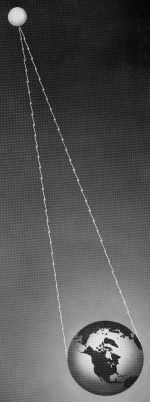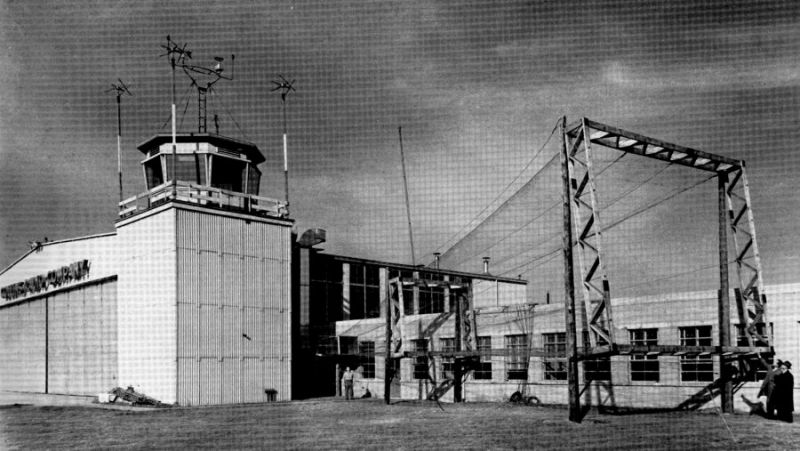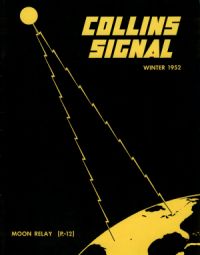|
|
|
| MOON RELAY | |
 |
DURING NOVEMBER, scientists of Collins Radio Company and the National Bureau of Standards used the moon as a giant reflector to bounce ultra-high frequency signals part way across the country. The earth distance involved in the experiments was about 800 miles (from Cedar Rapids, Iowa, to Sterling, Virginia) but theoretically the signal could have been relayed between any two observers able to “see” (astronomically) the moon at the same time. Thus, the experiments indicate the feasibility of using the moon as a natural relay station for radio communication between two distant points on the earth's surface. On two occasions when the position of the moon was favorable, Collins and NBS scientists aimed antennas at the moon. Using a 20-kilowatt transmitter with power generated by an ultrahigh frequency experimental radio tube (a Resnatron), Collins scientists sent up a 418-megacycle coded signal from the Cedar Rapids laboratories. The moon served as a natural reflector to return an infinitesimal amount of radio energy to the NBS field station at Sterling, Virginia. The time interval for the one-half million miles from earth to moon to earth was two and one-half seconds. NBS scientists recorded the coded signal on a magnetic tape. Decoding revealed its message had been heard in the vicinity before. It was the same historic message, “What hath God wrought!” used by Samuel Morse on May 24, 1844, over his new telegraph line from Washington to Baltimore. The first radio contact with the moon was made nearly six years ago by the U.S. Army Signal Corps at Belmar, New Jersey. The Signal Corps 100-megacycle signal sent by a modified war surplus radar set was received at the transmitting site. Again in 1950 an Australian group obtained moon echoes on 20 megacycles using equipment and techniques normally employed for the London-Australia shortwave broadcast service. The Collins-NBS experiment is the first use of ultrahigh frequencies for the purpose, and the first to send a long distance message via the moon. |

